Innovation and Systems Change
There is a need for a transformational change in how water quality improvement activities are designed, funded, and implemented. We're supporting activities aimed at making this change a reality through an investment of $10 million.
#The Innovation Program is designed to result in
- new or better practices, tools and approaches for farming, grazing and land restoration that achieve better outcomes for the landholder while also improving water quality
- new systems to support better decisions related to investing in water quality improvement, and
- more funding sources to support water quality improvement.
Four priority areas of investment have been identified.
Technology transformation
focused on applying new approaches to improving water quality that address the most critical needs and limitations in terms of lowering costs and/or improving the efficacy of interventions.
Sharing and management of industry and landholder-owned data
focused on technological challenges and opportunities associated with the breadth and resolution of the data needing to be collected, stored, curated, synthesised and utilised in a way that both protects and increases value across various sectors of industry and government.
Broad and local scale planning of future interventions
focused on Reef-wide, regional, and local planning and mapping to support prioritisation associated with future strategic investments, to assess the suitability of different interventions, and to guide the identification and implementation of specific on ground activities.
Innovative financing and funding initiatives
focused in increasing the potential sources of funding for water quality improvement activities, including through creating greater incentives to achieve an enduring improvement of land management practices.
#Webinars
Innovations in reducing erosion and fine sediment loss
Innovations in cane growing and farm management
Innovative financing mechanisms for improving water quality
#What happens next?
An open grant round was conducted in early 2020, with more than 120 proposals submitted. The following innovative ideas have been chosen through three priority themes with more to be announced shortly.
The majority of the funding available under the Innovation Program has now been committed and at this stage there is no plan for a further grant round.
Many funded projects have begun to show results that will have a real impact on the way we do things. Read more about the projects below. If complete, you can also find links to any resources the project has produced.
#Technology Transformation projects
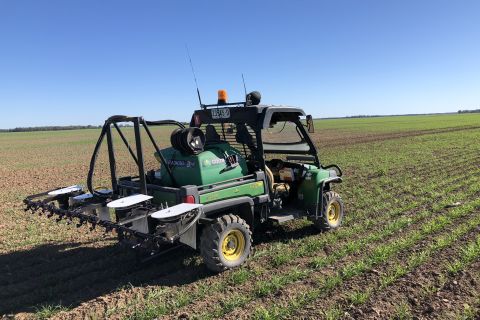
Reducing herbicide use on sugarcane farms with precise robotic weed control
James Cook University
$900,000
Together we will lower herbicide run-off into the Reef and reduce costs for farmers, by creating new smart weed detection and spraying systems that will reduce herbicide usage on sugarcane farms by at least 80%. Partnering with AutoWeed and Sugar Research Australia, the technology will initially be trialled in the Burdekin and uses deep learning to detect and spray weeds without hitting non-target crops, supporting a healthy Reef.

Trialling the use of drones in riparian restoration
Greening Australia
$400,000
Trialling the use of drones in mapping, weed spraying and seed dispersal in riparian and wetland areas to help reduce the cost and increase the scale of impact for restoration projects working toward better water quality for the Reef.
Riparian zones and wetlands are natural landscape buffers, filtering sediment and nutrients from water before it reaches the Great Barrier Reef, and restoring these habitats is a major part of supporting a healthy Reef.
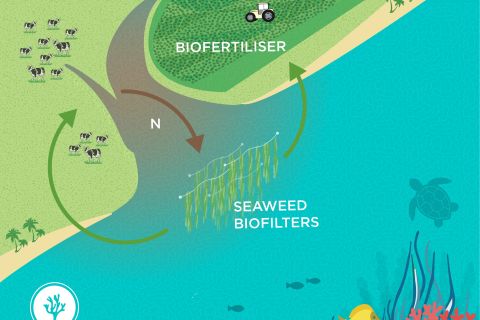
Network of seaweed biofilters – Stage 1: Concept design and Stage 2: Field trials
Australian Seaweed Institute
$920,000
Collaborating with Central Queensland University to develop a transformational technology for seaweed which will help protect our Reef.
Through a network of seaweed biofilters between the coast and the reef, nitrogen and carbon dioxide would be captured by the seaweed and then harvested for use in products such as biofertiliser. This circular economy innovation is anticipated to provide a significant opportunity for new jobs and economic development in regional Queensland while improving water quality.
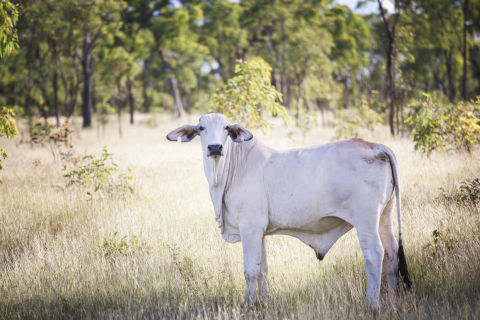
Understanding the role of regenerative grazing management practices in improving land condition and water quality
CSIRO
$400,000
Collaborating with the University of Southern Queensland to address a gap in knowledge on the effects of Regenerative Grazing practices on land, soil and runoff to help improve landscape condition and water quality.
Grazing represents up to 80% of the land use draining to the Reef so if the positive benefits can be quantified, this approach could be used to accelerate landscape recovery and improve runoff and water quality for a healthy Reef.

On-ground testing and modelling of the effectiveness of Enhanced Efficiency Fertilisers
Sugar Research Australia in partnership with CSIRO
$700,000
Working with sugarcane farmers to test the effectiveness of Enhanced Efficiency Fertilisers (EEFs) as they closely match the nitrogen requirements of growing crops by releasing nitrogen over time. On-farm evaluation (Burdekin, Mackay-Whitsunday and Wet Tropics) and modelled (Wet Tropics) ‘virtual experiments’ coupled with data mining and machine learning, identify where and when nitrogen losses are reduced by using EEFs.
The ability to better match nutrient supply with crop uptake will see a reduction in nitrogen running off farm into the Reef’s waters whilst maintaining productivity and potentially improving profitability.

Development of a banana yield monitoring system and a refined input management program
Farmacist
$795,000
Current practices in determining nutrient requirements for banana plantations are based on maximising production but do not account for changes in soils or growing conditions which can lead to pollutants running off into our Reef’s waters.
This project is delivering plantation yield variation maps to growers which allows them to best match the inputs of nutrients and water to the yield potential of their crops. This approach has shown a reduction of fertiliser use by more than 25% in other tropical crops, resulting in an improvement in the quality of our Reef’s waters.
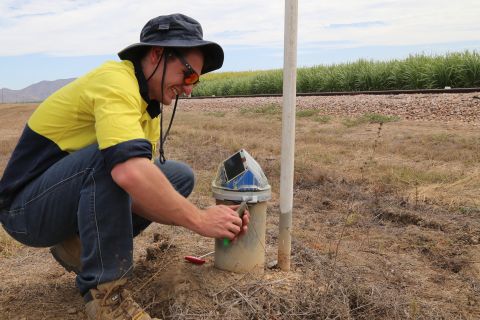
Robust, cost-effective sensor for dissolved inorganic nitrogen
IntelliDesign
$300,000
The underlying principle used for detecting Dissolved Inorganic Nitrogen (DIN) is the very common and well-established technique of measuring the absorbance of light through a test water sample to determine the concentration of various chemicals. The absorbance spectrum of DIN is in the deep UV-C spectrum (typically in the 200-280nm wavelength range), making measurement difficult without very high cost or highly specialized equipment.
This Project was initiated to see if a lower cost Nitrate Sensor system could be developed for research, scientific and commercial purposes and specifically utilising the world-class, UV LED technologies available here in Queensland.
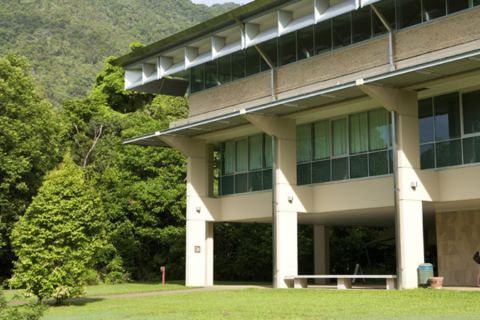
An irrigation rapid assessment visualisation tool (i-RAT)
James Cook University
$820,000
Over irrigating not only increases the costs associated to water and electricity but also increases pollutant runoff threatening the health of our Reef. Together we’re accelerating improved irrigation practices and driving new ways to finance water quality improvements by developing a tool that allows growers to readily identify the implications of different irrigation approaches for farm economics, as well as linkages to opportunities for green finance.
The INCENTIV8 tool is initially being trialled in the Burdekin irrigation district and serves as a boundary object to navigate conversations, converge thinking from different stakeholders and bridge the gap between better irrigation management and sustainable finance.
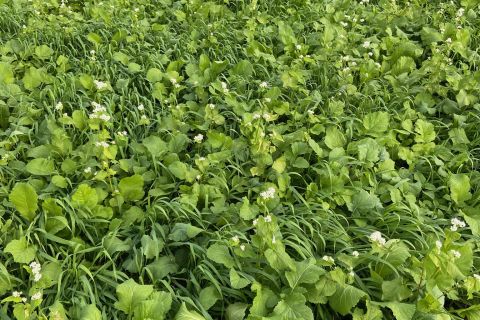
Modifying machinery to plant multi-species crops in sugarcane farms for improved soil health and Reef water quality
Farmacist
$310,000
Trialling a new multi-species crops concept in sugarcane that is cost-effective and can benefit soil health and improve water quality from better crop uptake of applied nutrients and reduced water runoff that carries pollutants to our Reef’s waters.
This farmer-driven project is being undertaken in the Mackay-Whitsundays region and will modify existing equipment cost-effectively to simultaneously plant different seed sizes while undertaking existing paddock operations. This practical, affordable equipment will increase adoption of multi-species cropping and have benefits of improving water quality run-off.

Using eShepherd virtual fencing technology in sensitive riparian areas
Agersens Pty Ltd
$335,000
In a world-first, Agersens is showing how virtual fencing technology can protect our Reef from the tonnes of sediment runoff caused by eroding gullies and streambanks affecting the quality of its water.
The meandering nature of waterways and the impact of floods and fires makes installing and maintaining conventional fencing costly. eShepherd is a new agricultural technology that allows farmers to establish virtual fences in challenging terrain typically unsuitable for traditional fencing. This technology is being trialled in the Burdekin catchment to control and move cattle from selected locations to demonstrate the viability and cost-effectiveness of the virtual fencing approach.

Understanding nutrient export from remediated gully systems
Greening Australia
$400,000
It has long been known that the sediment running off land into the Reef’s waters also contains nutrient pollutants but the relationship is unclear. As a result, the selection and design of gully restoration projects are typically focussed only on reducing the amount of sediment runoff.
This innovative approach is investigating if large scale gully remediation projects that reduce significant amounts of sediment run-off are also reducing nutrient pollution, therefore enabling the greatest cuts to Reef pollution from any investment.
#Broad and local scale planning of future interventions
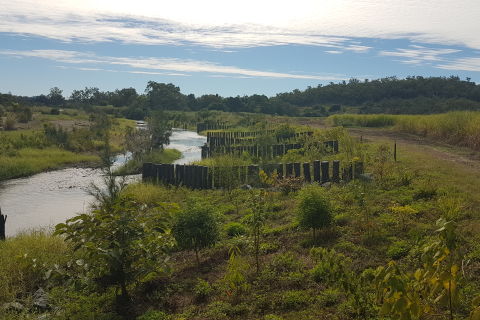
Advanced hydrodynamic modelling of pile field bank stabilisation works to inform design guidelines
Alluvium
$200,000
Significant funding has been spent in recent years on pile field groynes as part of streambank restoration projects that aim to reduce sediment running off the Reef. Timber pile field groynes are a biodegradable engineering approach used to stabilise streambanks and aid native riparian vegetation establishment.
This project combined the latest river restoration science with advanced three-dimensional hydrodynamic modelling to explore improvements to the design of pile field groynes which will result in more cost-effective sediment reduction programs that improve the health of our Reef. This project has been completed and the conclusions can be useful for improving cost effectiveness of streambank stabilisation projects that use groynes.

Assessing gully and stream bank erosion risk with LiDAR
CSIRO
$350,000
Erosion control projects can achieve larger reductions in sediment running off to the Reef by targeting the most actively eroding sites. This project will provide greater information for agencies and landholders to engage in erosion control, allowing for better targeted and more cost-effective water quality improvement projects in the future.
CSIRO will combine multi-resolution and computationally efficient approaches to map and assess the erosion hazard of individual gully and stream bank features across large LiDAR terrain datasets.
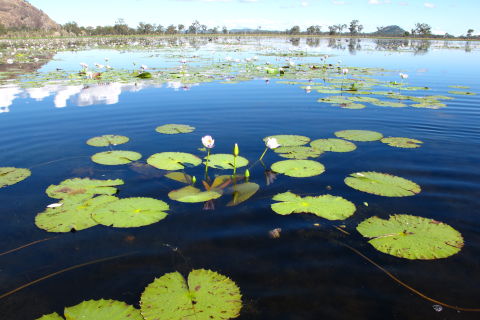
Turning wetland ecological and hydrological data capture into positive wetland and water quality management
Department of Environment and Science
$100,000
Supporting the Queensland Herbarium to deliver a wetland capture app that will provide a service that verifies the types of wetlands in landscapes and provides a curated package of wetland and weed species management information tailored to those wetlands.
This will provide landholders with information to support wetland management planning to conserve or enhance wetland biodiversity and productivity. Compiling this information will contribute to more effective system repair planning and management at local, regional and state scales that will improve the quality of water flowing to our Reef.
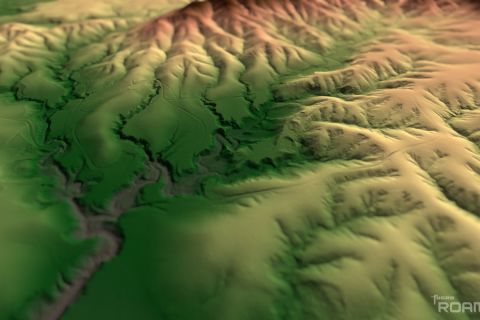
Extracting riverbank and gully erosion data from the Qld power grid
Griffith University
$580,000
Partnering with Fugro to fill a major gap in understanding of the source of fine sediment erosion that is degrading Queensland rivers and the Reef. This project will provide unprecedented access to 620 Tb of privately-held data collected for powerline asset management, equivalent to 71 years of continuous Netflix streaming.
Novel techniques in data handling will repurpose this big dataset for landscape analyses to measure and monitor riverbank and gully erosion. Unlocking this information will provide a technological breakthrough to significantly improve our ability to identify, quantify and prioritise erosion sites for Reef-wide water quality management.
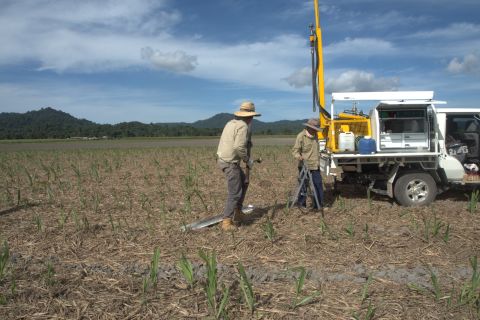
Electromagnetic Induction Soil Mapping in the Russell River catchment
Jaragun Pty Ltd
$350,000
Partnering with the Qld Department of Natural Resources, Mines and Energy. to use state-of-the-art electromagnetic induction (EMI) technology combined with conventional soil surveys to develop detailed soil maps required by the sugarcane industry to implement precision nutrient management for a reduction in pollutants running off into the Reef whilst improving farm productivity.
This project will provide a repeatable methodology with the mapping products immediately available to support industry implementation of Six Easy Steps across the Wet Tropics - a Great Barrier Reef hotspot for dissolved inorganic nitrogen runoff.

Cleaner Road Runoff
Local Government Association of Queensland (LGAQ)
$1,500,000
Across all the 35 Reef catchments, there are thousands of kilometres of state and local government unsealed roads. Traffic movements and runoff, particularly in the wet season, contribute to gully erosion and watercourse sediment loads. As a rough rule of thumb, unsealed roads can be expected to shed 25mm of pavement surface depth over a year.
This project aims to achieve a measurable contribution to reducing sediment loads in key catchments through developing baseline data of unsealed road surface erosion and sediment contribution, a methodology for identifying risk areas, best practice approaches for repair and management of unsealed roads, active engagement from road managers, and measurements of water quality benefits derived from improved management.
#Innovative financing and funding initiatives

Prototype to Product: N insurance for sugarcane farmers and GBR protection
CSIRO
$690,000
CSIRO has partnered with WTW to test a world-first insurance product – nitrogen (N) insurance – to help farmers manage the risk of reduced yields from reduced fertiliser application. If successful, it will overcome a significant barrier to the adoption of reduced nitrogen rates.
The project is working with farmers and industry in the Wet Tropics and Mackay to build knowledge, understanding and trust in the N insurance product, and evaluate its commercial performance. The potential for such insurance to drive water quality improvement is huge – it could result in a 20 kg/ha reduction in nitrogen applied. If that is implemented across half of the area under sugar cane in the GBR catchments, that would result in a reduction of dissolved inorganic nitrogen discharge of up to 700 t/yr and substantial improvements in water quality.

Great Barrier Reefinance
Cultivate Farms Pty
$170,000
Australian farms have traditionally been passed on to the next family members with family farms forming the cornerstone of the farming community and economy. However, the ability to retain and attract next-generation farmers is getting harder.
Working together with Herbert Cane Productivity Services, Cultivate farms has helped eliminating the biggest barrier to farm ownership for next generations – access to capital and land – by matching aspiring (next generation) farmers with those looking to retire from the land. The transition is also be linked to improved management practices, which will result in improved water quality outcomes for our Reef.
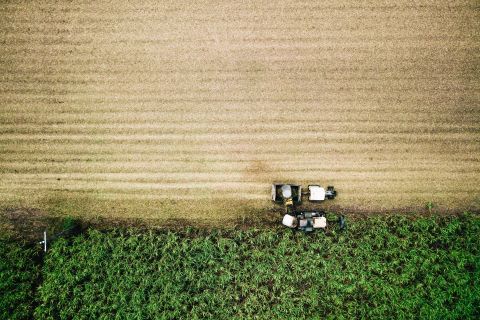
Redefining and reconfiguring Reef catchment land use for better long-term outcomes
Natural Capital Economics
$230,000
This project aims to develop a comprehensive understanding of the socio-economic benefits and costs of broad-scale, targeted land use redefinition that improves outcomes for our Reef, economic viability of agriculture, and social resilience for communities. It is also assessing how such a redefinition process could work in conjunction with other initiatives and emerging environmental product markets to ‘crowd in’ co-investment from a broader suite of sources.
This innovative project illustrates how biophysical, social and economic data can inform a more strategic, evidence-based approach to managing the catchments surrounding the Reef.

Farmland to Reef Regeneration Fund
The Nature Conservancy
$500,000
Underpinned by a long history of successful impact investment, Kilter Rural and The Nature Conservancy Australia partnered to undertake a feasibility study into a long‐term, landscape scale, impact investment fund to deliver positive environment and biodiversity outcomes for the Great Barrier Reef and its catchments.
A Fund was developed as a mechanism to invest in the sugarcane sector to both produce a return on investment as well as achieve significant water quality improvements on those properties.
The project also did a preliminary analysis of the potential for converting sugarcane and grazing properties in the Burdekin and Fitzroy catchments into blue carbon projects.
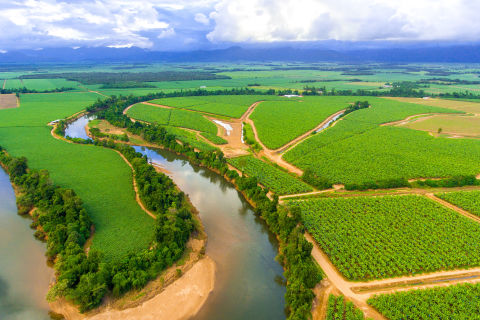
Eco-Markets Australia’s Reef Credit Scheme
NQ NRM Alliance
$400,000
The Reef Credit Scheme is a world-first market-based mechanism that will improve water quality flowing to the Great Barrier Reef. Landowners generate and sell Reef Credits that result from audited agricultural and land improvement activities improving the quality of water flowing to our Reef. The Reef Credit is a tradable, verified unit of pollution reduction that can be sold to a range of buyers such as government, corporate and philanthropic entities.
This project will transition the existing Reef Credit Scheme architecture from its current start-up phase to a fully independent governance structure administering the Scheme. The scheme will be managed by Eco-Markets Australia Limited, which will be Australia’s first non-government environmental markets administrator.
